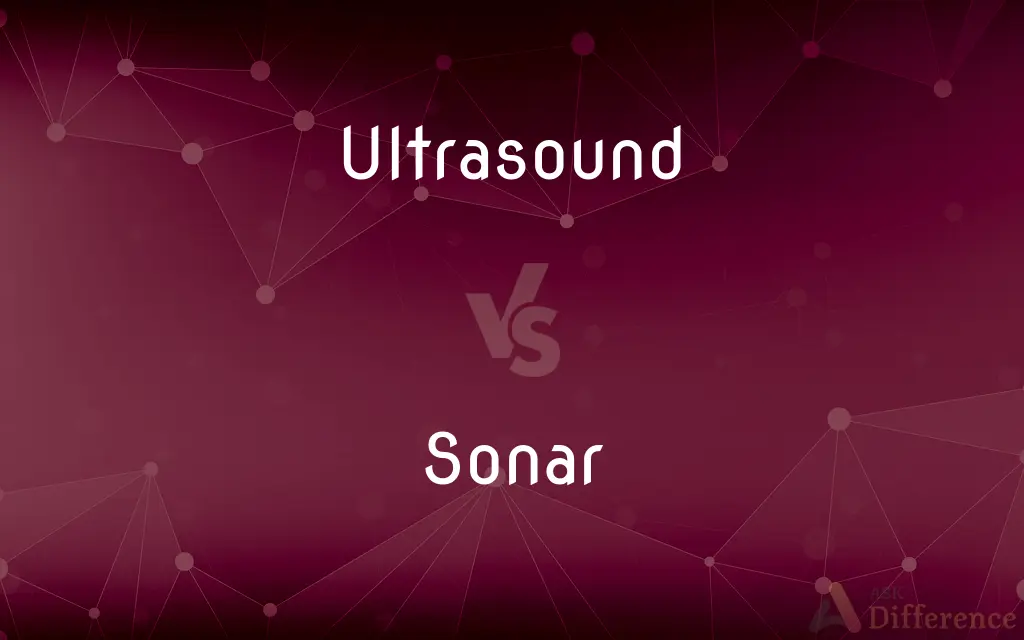Ultrasound vs. Sonar — What's the Difference?

Difference Between Ultrasound and Sonar
ADVERTISEMENT
Compare with Definitions
Ultrasound
Ultrasound is sound waves with frequencies higher than the upper audible limit of human hearing. Ultrasound is not different from "normal" (audible) sound in its physical properties, except that humans cannot hear it.
Sonar
Sonar (sound navigation and ranging) is a technique that uses sound propagation (usually underwater, as in submarine navigation) to navigate, communicate with or detect objects on or under the surface of the water, such as other vessels. Two types of technology share the name "sonar": passive sonar is essentially listening for the sound made by vessels; active sonar is emitting pulses of sounds and listening for echoes.
Ultrasound
Sound or other vibrations having an ultrasonic frequency, particularly as used in medical imaging
An ultrasound scanner
Sonar
A system using transmitted and reflected underwater sound waves to detect and locate submerged objects or measure the distance to the floor of a body of water.
Ultrasound
Ultrasonic sound.
ADVERTISEMENT
Sonar
An apparatus, as one in a submarine, using sonar.
Ultrasound
The use of ultrasonic waves for diagnostic or therapeutic purposes, specifically to image an internal body structure, monitor a developing fetus, or generate localized deep heat to the tissues.
Sonar
Echolocation.
Ultrasound
An image produced by ultrasound.
Sonar
(nautical) echolocation
Ultrasound
(physics) Sound with a frequency greater than the upper limit of human hearing, which is approximately 20 kilohertz.
Sonar
(nautical) A device that uses hydrophones (in the same manner as radar) to locate objects underwater.
Ultrasound
(medicine) The use of ultrasonic waves for diagnostic or therapeutic purposes.
Sonar
A measuring instrument that sends out an acoustic pulse in water and measures distances in terms of the time for the echo of the pulse to return; sonar is an acronym for sound navigation ranging; asdic is an acronym for anti-submarine detection investigation committee
Ultrasound
(ambitransitive) To treat with ultrasound.
Ultrasound
Very high frequency sound; used in ultrasonography
Ultrasound
Using the reflections of high-frequency sound waves to construct an image of a body organ (a sonogram); commonly used to observe fetal growth or study bodily organs
Share Your Discovery

Previous Comparison
Counterclaim vs. Assertion
Next Comparison
Reckoning vs. Revenge













































